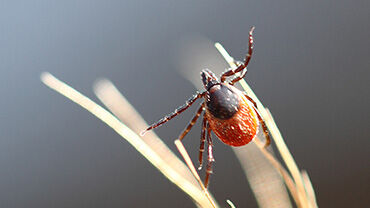How communities can collaborate with institutions during public health emergencies: Case studies focusing on tick-borne diseases
Focusing on two recent public health emergencies related to tick-borne diseases in two EU countries, ECDC experts investigated the public health response and specifically the involvement of the communities.
The affected and at risk communities can be a key resource for the public health sector when preparing for and responding to public health emergencies related to infectious diseases. This is the main theme of two ECDC case studies exploring how the health sector cooperate with non-health-related sector during infectious diseases’ crisis and what the good practices are.
Focusing on two recent public health emergencies related to tick-borne diseases in two EU countries, ECDC experts investigated the public health response and specifically the involvement of the communities:
- in Spain, two cases of autochthonous infection with Crimean-Congo haemorrhagic fever (CCHF) virus emerged in the Autonomous Community of Castilla y León in August 2016, and
- in the Netherlands the first two endemic cases of tick-borne encephalitis (TBE) in the country, appearing in July 2016 in the Utrecht and Twente regions.
A report with the main conclusions and two country visit reports are published today.
The technical reports describe the engagement and the role of communities during the pre-incident, incident and post-incident phases of the two outbreaks, and identify a number of good practices, which other EU Member States could apply, such as:
- To promote collaboration between the authorities and the community, the countries could use the pre-existing disease-related networks to spread information to the community, such as the Lyme disease patient organisation in the Netherlands. They could cultivate relationships with community-based monitoring networks such as hunters and foresters as well as perform stakeholders’ analysis.
- To promote the inter-sectoral cooperation, the countries could develop ‘One-health’ multi-sectoral approach involving all the relevant institutions. They could set up a protocol for establishing a crisis committee in the case of an outbreak. To prepare, the health authorities could conduct simulation exercises.
- To improve the communication flow between the authorities and the media, the countries could prepare contingency plans for press offices of the regional authorities. Building relationships with the journalists, appointing a trusted spokesperson are other recommended activities. In both countries, the authorities followed the public perception of the outbreak through social media monitoring.
Surveillance and monitoring
Synergies in community and institutional public health emergency preparedness for tick-borne diseases in Spain and the Netherlands
ECDC has initiated a case study project to investigate the synergies between communities affected by serious public health threats and the institutions.
Surveillance and monitoring
Synergies in community and institutional public health emergency preparedness for tick-borne diseases in the Netherlands
The present report is concerned with the emerging infection of tick-borne encephalitis in the Netherlands — the two first endemic cases occurring in July 2016 — in the larger context of a widespread and increasing incidence of lyme borreliosis.
Surveillance and monitoring
Synergies in community and institutional public health emergency preparedness for tick-borne diseases in Spain
The present report is concerned with the events in Spain surrounding two cases of infection with Crimean-Congo Haemorrhagic Fever (CCHF) virus that emerged in the Autonomous Community of Castilla y León in August 2016.





